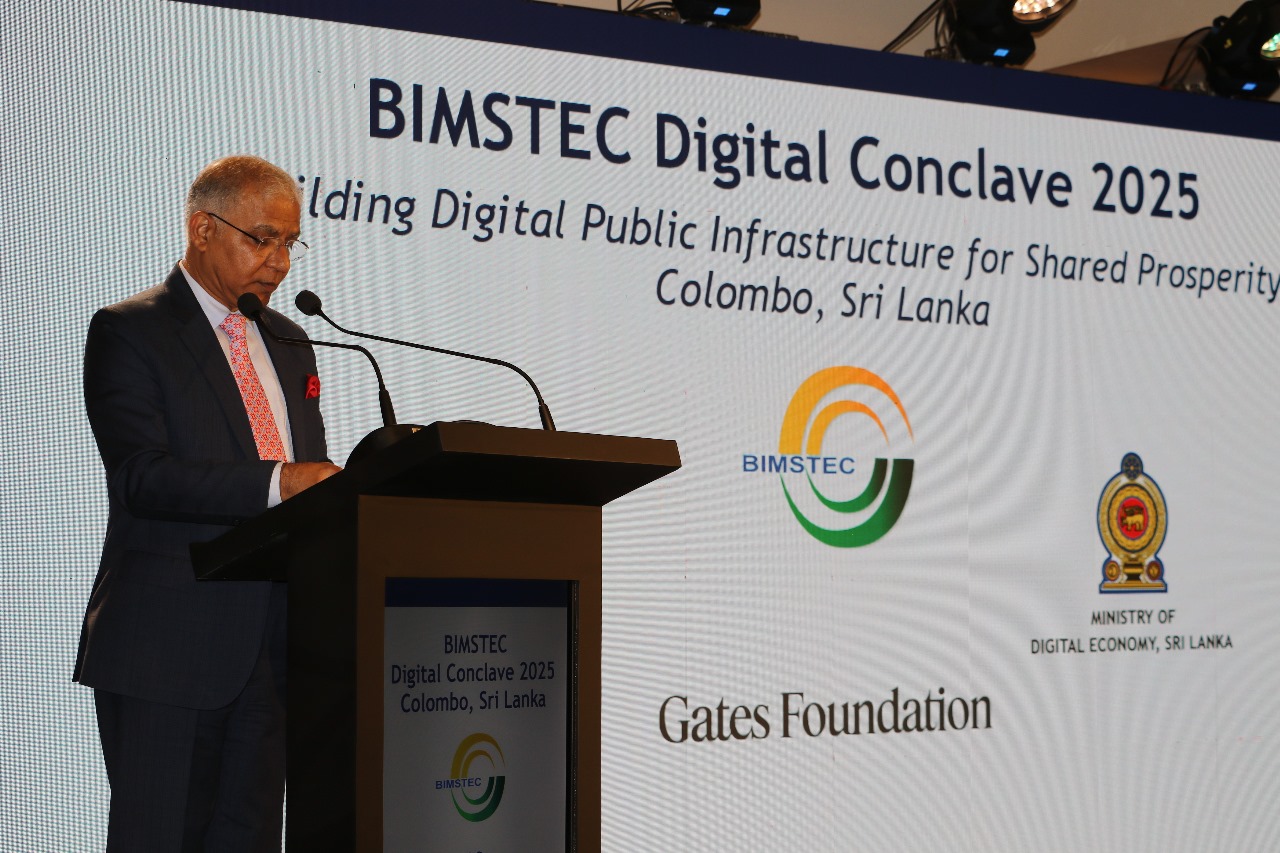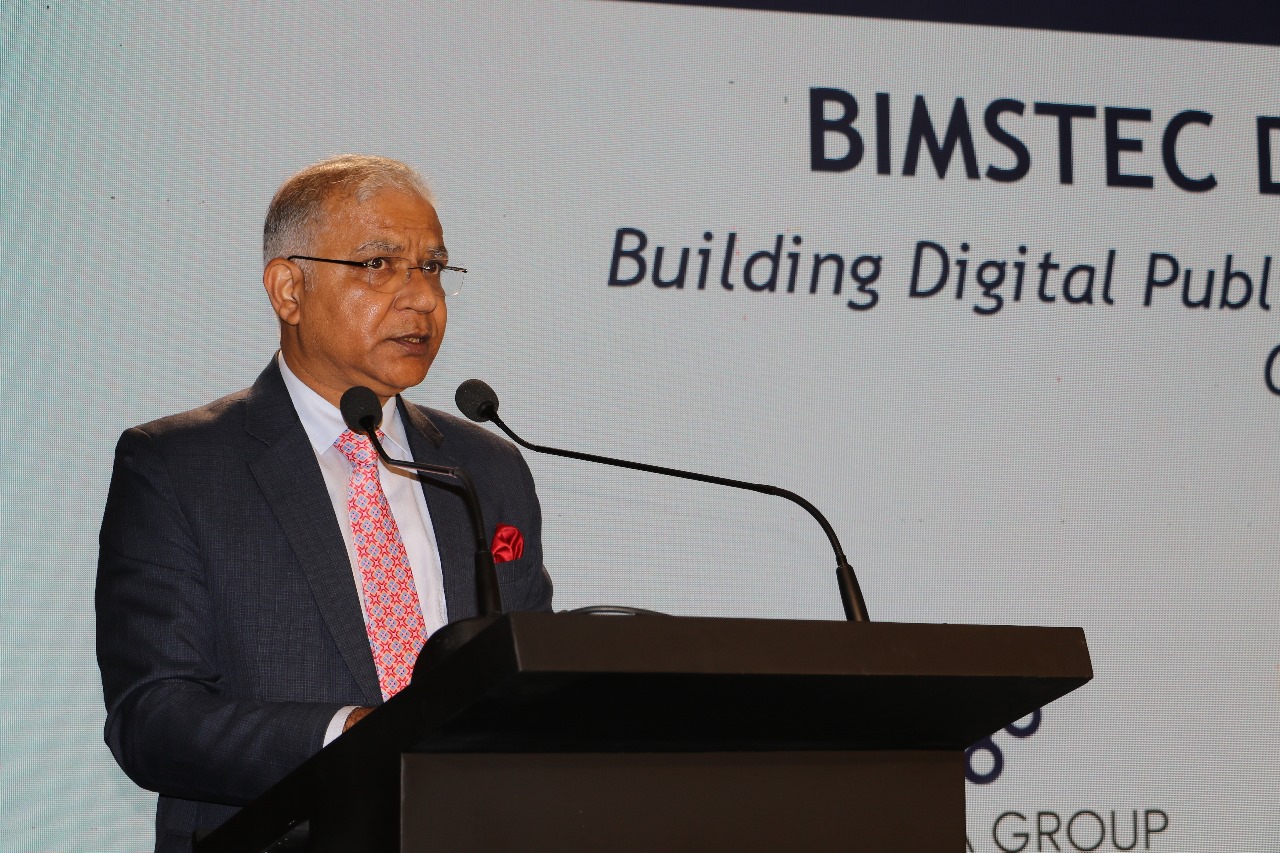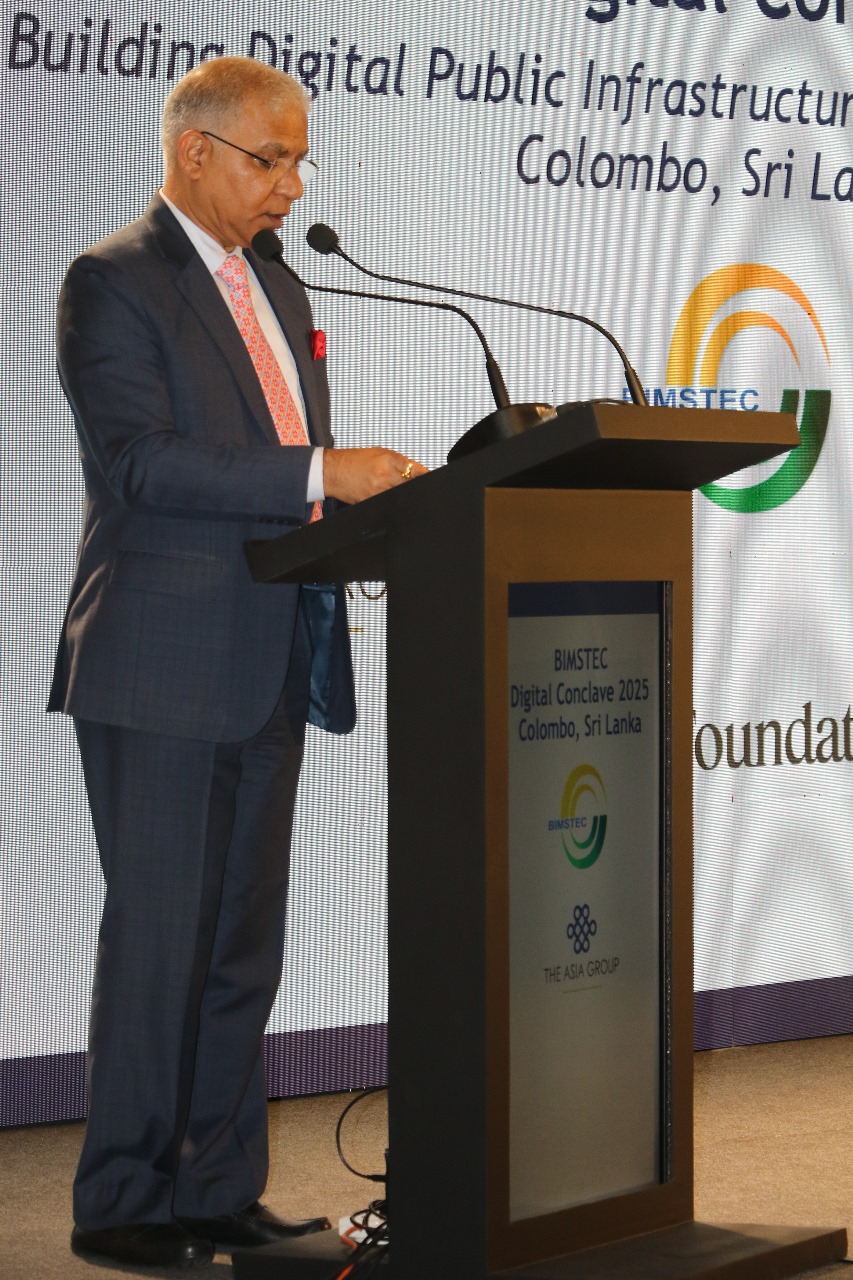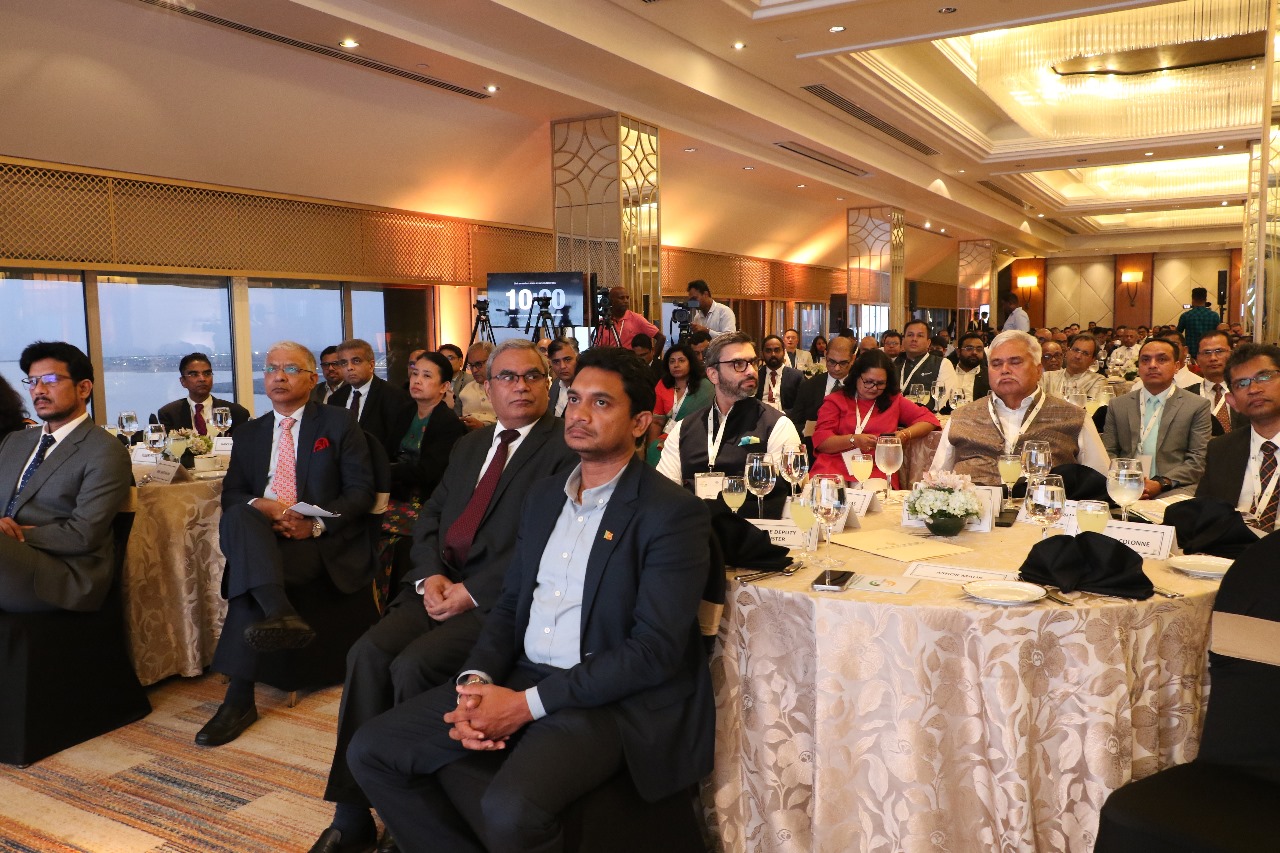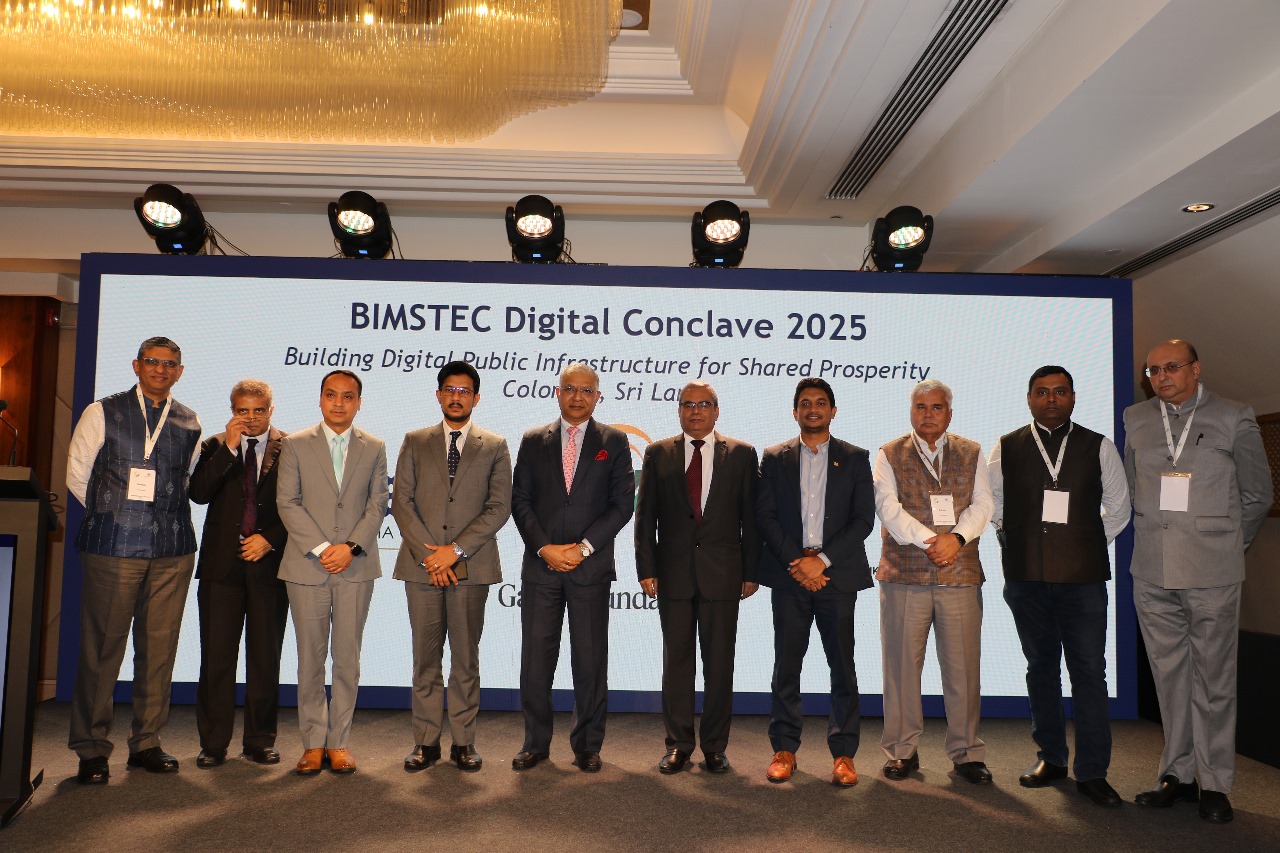- Home
- About Us
- Consular Services
- India-Sri Lanka Relations
- Media
- Country File
- Trade
- Education/ Scholarship
- Cultural SVCC
- Important links
- NDCA
Speeches & Statements
Remarks delivered by High Commissioner of India H.E. Santosh Jha at the BIMSTEC Digital Conclave 2025 on 7 February 2025 at Hotel Taj Samudra, Colombo
February 07, 2025
Remarks by High Commissioner of India H.E. Santosh Jha
at BIMSTEC Digital Conclave 2025
on 07 February 2025
at BIMSTEC Digital Conclave 2025
on 07 February 2025
Hon. Eranga Udesh Weerarathna
Dy Minister of Digital Economy
Hon. Chaturanga Abeysingha
Dy Minister of Industry & Entrepreneurship Development
Mr. Ashok Malik, Chair of the India Practice at The Asia Group,
Washington DC,
Mr. Indra Mani Pandey, Secretary General, BIMSTEC,
Ladies & Gentlemen,
Namaskar
Good evening
I am delighted to be given this opportunity to address the inaugural BIMSTEC Digital Conclave co-hosted by BIMSTEC and The Asia Group.
Let me, at the outset, congratulate the Government of Sri Lanka for the digital initiatives launched today, including the 'GovPay' platform for digitization of all government payments, and the introduction of the Electronic Birth, Marriage and Death Certificates facility for Sri Lankans abroad.
These initiatives form part of the special emphasis laid on digital transformation by the Sri Lankan Government led by President Anura Kumara Disanayaka. This emphasis, together with Sri Lanka being the BIMSTEC sectoral lead for Science, Technology and Innovation, make Colombo the obvious choice for hosting this Digital Conclave.
Ladies and Gentlemen,
For India, BIMSTEC represents the intersection of ‘Neighborhood First’ outlook, the ‘Act East’ Policy and the ‘SAGAR’ vision. The intersection focuses on the littoral states of the Bay of Bengal, where collaborative potential has in modern times remained much below its possibility frontier.
While historically, BIMSTEC as a region had people, ideas and cargo traversing its lengths and breadths, the vibrancy of these exchanges faded away. The endeavor is to realize the latent synergies, and to do so quickly, purposively for shared prosperity.
BIMSTEC seeks to re-energize the region’s shared history and ethos with new areas of cooperation, new resources and a renewed commitment for cooperation among the Bay of Bengal nations. This becomes even more pertinent today in an era of re-globalization where regional blocs are proving to be the way forward for international collaboration.
BIMSTEC Member States have been exploring these symbiotic pursuits across sectors – including (i)Trade, Investment and Development (ii) Environment and Climate Change (iii) Security(iv) Agriculture and Food Security (v) People-to-People Contact (vi) Science, Technology & Innovation and (vii) Connectivity.
Today’s conclave discusses a theme that cuts across these pillars - digitization.
India has over the past decade or so undergone a digital transformation at an unprecedented pace and scale, with unparalleled benefits to all sections of the society. At a time when mobile and data access were seen globally as a convenience, India adopted a model that envisioned digitization not only as a means of connectivity - but as a medium of equity and opportunity. And that to me is the essence of Digital Public Infrastructure.
India today has issued digital IDs – referred to as Aadhaar – to1.3 billion of its citizens. We have 1.2 billion mobile phone users, 950 million internet users. 40% of the world’s real-time digital transactions take place in India. Over the last decade, India has laid optical fiber that is eight times the distance between the Earth and the Moon! Almost every district in India is connected to 5G services. Today, India stands as the second-largest 5G market in the world, and we are now rapidly working on 6G technology.
We have used the power of the JAM trinity – Jan Dhan bank accounts, Aadhaar or the digital identity, and Mobile phones – to revolutionize financial inclusion in India. It has allowed the government to make 450 million direct cash transfers, transfer food rations to 850 million directly in full transparency in the last 10 years. Direct Benefits Transfer has amounted to about 450 billion US Dollars. It has also plugged leakages, and has saved over 35 billion US Dollars.
Digitization has been extended to government services, transforming accessibility through e-governance. The JAM trinity has become the foundation of many innovations. Let me mention a few - The CoWIN portal supported India's Covid vaccination drive. It helped in the delivery of over two billion vaccine doses along with digitally verifiable certificates at the same pace but on a bigger scale than the US and Europe. The Unified Payments Interface (UPI) has created opportunities for numerous new companies in India.
The new buzz in the DPI space is around ONDC- Open Network for Digital Commerce, an innovation that will democratize e-commerce, particularly benefitting small and medium enterprises. Over 400 million Indians can access their important documents anytime anywhere using the DigiLocker - a secure cloud-based platform for storage, sharing and verification of documents & certificates. We are working towards bringing similar models of digitization for transformation in the health and education sectors as well.
The Digital Conclave today is curated to discuss each of these dimensions of Digital Public Infrastructure, ranging from Digital Identity, Digital Health, Digital Payments, E-commerce and of course the motivation of it all, e-governance.
India is committed to lean on its DPI success story to fast track means of unlocking opportunities and potentialities for the entire region.
In the bilateral context, the recent visit of President Anura Kumara Disanayaka to India added further momentum to this very important pillar of cooperation – people-centric digitization. The leaders agreed to expedite implementation of the India-assisted INR 300 crores Sri Lanka Unique Digital Identity (SLUDI) project which will act as the foundational DPI and unlock developmental dividends of the DPI Stack for Sri Lanka. A Joint Working Group on Digital Economy has also been set up. Technical discussions on the implementation of DigiLocker in Sri Lanka are ongoing. While UPI Payments was launched in Sri Lanka last year for the ease of payments for Indian tourists, we are now looking at extending the use of UPI digital payments for the benefit of both countries.
There is also interest for bilateral exchanges to garner learnings from India’s GeM portal, PM Gati Shakti digital platform on coordinated and integrated development of infrastructure, digitized customs and other taxation procedures, with a view to exploring the benefits of establishing equivalent systems in Sri Lanka. The benefits of these are clearly visible in India. GeM Portal alone has led to saving of 13 billion US Dollars in last decade by bringing down expenditure on projects and procurements. The GATI SHAKTI has significantly expanded the pace of infrastructure development. Similarly, Digitization of Taxation System has increased revenues and has even brought in greater transparency.
I look forward to the conversations at the BIMSTEC Digital Conclave, as it takes the participants through the entire bouquet of DPI stack.
Before I conclude, let me just say that the digital world is shifting gears from open APIs (Application Programming Interface) to open source AI models. India is building foundational AI models using 18000+ high-end GPUs and large non-personal data sets. Compared to global models’ computation costing 2.5 to 3 dollars per hour usage, India’s AI Model computation will cost less than less than 100 rupees per hour after 40% government subsidy. India’s AI Mission is based on Prime Minister Shri Narendra Modi’s Vision of AI for All. As in other areas, we are ready and willing to share our journey with our closest maritime neighbor-Sri Lanka and our BIMSTEC partners.
I am optimistic that we will utilize this platform to add momentum to each of our countries’ DPI journeys and further open new paths of progress for the BIMSTEC region. Once again, let me thank you all for joining this valuable conversation and my best wishes to the organizing team for a successful conclave.
Thank you.
